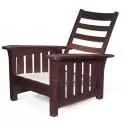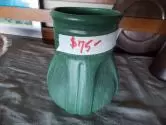When It Comes Time To Sell…
Sooner or later, it happens to all of us.
Whether it be one item or several, the time will come when we need to sell a part of our collection. Whether it be to make room for a new purchase, finance the next one or facilitate a move to a smaller home, deciding just how to go about selling an item can be frustrating.
Here, then, are some of your options, including some of their advantages and disadvantages:
Private Sale – For those who are determined to get every dollar of what they think their piece is worth, this is the path to choose. You set the price and you find the buyer. Problem is ‘what’s the right price?’ And ‘where’s the buyer?’
You are responsible for doing all of the necessary research into what you have and how much other examples are currently selling for, taking into consideration changes in the economy, condition issues and how many other examples are currently available. Then, you have to place ads, find the buyers, contact them, set up times to show them the piece, invite strangers into your home, possibly deal with packing, shipping costs and insurance, etc.
In short, you will earn that last dollar.
Consignment – Some antiques dealers who have retail shops or do antiques shows will take pieces on consignment, wherein they retain a percentage of the final sale price as their fee. Unless they are a very good friend and owe you a favor, the consignment percentage will often hover around 30% to cover their costs and trouble. Consignments between friends can get messy and awkward (What happens if it gets damaged in the shop or while traveling? Or the buyer’s check bounces?), so tread carefully down this path, getting your agreement in writing.
Arts & Crafts Auction House – An auction house becomes your partner in the selling of your piece, but for a percentage of the hammer price. The percentage is sometimes negotiable, especially for rare, pristine examples, but expect to have around 20% deducted for most items. This covers the cost of advertising, staff, photography, fixed overhead, etc.
The lure of selling through auction, of course, is the possibility that the piece you thought was worth $2500 might spark a bidding war and end up selling for $10,000. You might win the lottery, too. Or get struck by lightning. Your $2500 piece could also sell for $1200, unless the auction house allows you to set a reserve price. In essence, that represents the price that below which you would get the item back. Discuss these terms carefully and get it all in writing.
Keep in mind that major auction houses work several months in advance, so the piece you want to sell now may not hit the auction block until six months from now. Some auction houses wait as much as a month after the sale to send out checks, so patience is required when choosing this option. Visit Rago Arts and Auction Center or Treadway-Toomey Galleries for more information as both auction houses are currently taking consignments for their next Early 20th Century auctions.
Non-Arts & Crafts Auction – Local auction houses that sell a variety of items from various genres and time periods can get your item to the auction block faster, but can they attract the Arts & Crafts buyers? If you know from experience that Arts & Crafts collectors frequent one such local auction, you may find that your ordinary pieces generate more spirited bidding than they would lost in an Arts & Crafts auction full of stellar antiques. Running rare, high-dollar pieces through a weekly community auction, however, is liable to leave you disappointed and holding a small check.
Online Auctions – Selling though an online auction such as Ebay is the most recent option to present itself. It’s a topic that deserves and will receive a complete column of its own here. For now, the best advice is to learn the ropes with your least important piece as you determine if you are up to the task. This is not an arena for the faint at heart.
By all means, this is not a complete discussion, but it should get you thinking about how you might dispose of some of your collection.
Good Luck!
– Bruce

